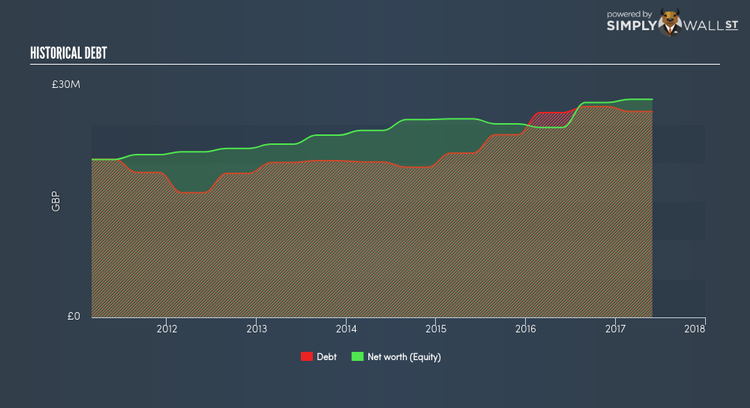Are Rotala PLC’s (LON:ROL) Interest Costs Too High?

Rotala PLC (AIM:ROL) is a small-cap stock with a market capitalization of £24.49M. While investors primarily focus on the growth potential and competitive landscape of the small-cap companies, they end up ignoring a key aspect, which could be the biggest threat to its existence: its financial health. Why is it important? Evaluating financial health as part of your investment thesis is vital, as mismanagement of capital can lead to bankruptcies, which occur at a higher rate for small-caps. Here are few basic financial health checks you should consider before taking the plunge. Nevertheless, since I only look at basic financial figures, I’d encourage you to dig deeper yourself into ROL here.
How does ROL’s operating cash flow stack up against its debt?
ROL’s debt levels surged from £23.6M to £27.3M over the last 12 months , which comprises of short- and long-term debt. With this rise in debt, the current cash and short-term investment levels stands at £2.2M , ready to deploy into the business. On top of this, ROL has produced £1.5M in operating cash flow during the same period of time, resulting in an operating cash to total debt ratio of 5.33%, meaning that ROL’s operating cash is not sufficient to cover its debt. This ratio can also be a sign of operational efficiency as an alternative to return on assets. In ROL’s case, it is able to generate 0.05x cash from its debt capital.
Does ROL’s liquid assets cover its short-term commitments?
Looking at ROL’s most recent £19.6M liabilities, it seems that the business is not able to meet these obligations given the level of current assets of £16.6M, with a current ratio of 0.85x below the prudent level of 3x.

Is ROL’s debt level acceptable?
ROL is a relatively highly levered company with a debt-to-equity of 94.36%. This is not unusual for small-caps as debt tends to be a cheaper and faster source of funding for some businesses. We can test if ROL’s debt levels are sustainable by measuring interest payments against earnings of a company. Ideally, earnings before interest and tax (EBIT) should cover net interest by at least three times. For ROL, the ratio of 3.18x suggests that interest is appropriately covered, which means that lenders may be inclined to lend more money to the company, as it is seen as safe in terms of payback.
Next Steps:
ROL’s high debt level indicates room for improvement. Furthermore, its cash flow coverage of less than a quarter of debt means that operating efficiency could also be an issue. In addition to this, the company may not be able to pay all of its upcoming liabilities from its current short-term assets. This is only a rough assessment of financial health, and I’m sure ROL has company-specific issues impacting its capital structure decisions. I suggest you continue to research Rotala to get a more holistic view of the stock by looking at:
1. Future Outlook: What are well-informed industry analysts predicting for ROL’s future growth? Take a look at our free research report of analyst consensus for ROL’s outlook.
2. Historical Performance: What has ROL’s returns been like over the past? Go into more detail in the past track record analysis and take a look at the free visual representations of our analysis for more clarity.
3. Other High-Performing Stocks: Are there other stocks that provide better prospects with proven track records? Explore our free list of these great stocks here.
To help readers see pass the short term volatility of the financial market, we aim to bring you a long-term focused research analysis purely driven by fundamental data. Note that our analysis does not factor in the latest price sensitive company announcements.
The author is an independent contributor and at the time of publication had no position in the stocks mentioned.
